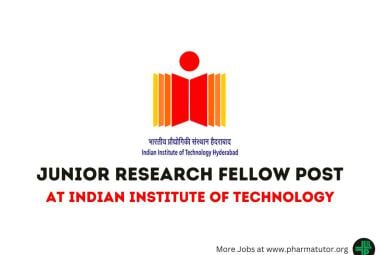{ DOWNLOAD AS PDF }
ABOUT AUTHOR
Deepak chowrasia
Institute of Pharmacy, CSJM University,
Kanpur, Uttar Pradesh
chowrasia.deepak@gmail.com
ABSTRACT
The present paper explores key consideration of different chromatographic procedures in phytochemical screening of natural products to investigate novel plant based therapeutically active compounds. Sophistication in instrumentation has sharpened the edges of chromatography making the technique an indispensable specialized laboratory as well as industrial tool for isolation, identification, and quality control of herbal products round the globe.
REFERENCE ID: PHARMATUTOR-ART-2417
|
PharmaTutor (Print-ISSN: 2394 - 6679; e-ISSN: 2347 - 7881) Volume 4, Issue 6 Received On: 04/02/2016; Accepted On: 13/02/2016; Published On: 01/06/2016 How to cite this article: Chowrasia D; Chromatography based Chemometric Fingerprinting, Isolation, & Quality Control of Phytochemicals; PharmaTutor; 2016; 4(6); 29-34 |
INTRODUCTION
Instead of tremendous advancements in synthetic organic chemistry traditional medicine continually provide newer lead molecules for drug discovery and development.[1] An equivalent employment of herbal regime in treating chronic ailments at an extraordinarily lower cost and side effects free course potentially enhanced their superiority over western system of medicine. Recently, literatures on ethanopharmcology expand enormously yet larger proportion of herbal-flora remains unexplored & requires chemical justification to ascertain their chemo-induced-pharmacological importance.[2] Since most of the “green-medicines” exist either as single or in combination with multiple herbs, their exact phytoconstituents estimation hence quality control is much tedious comparatively.[3] An intentional or unintentional substitution & adulteration of phytopharmaceuticals with partially or fully inferior analogues further imposes challenges among herbal industries to validate & authenticate their product obscuring their global commercialization.[4] Official compendia of different countries had laid down methods to quantify and standardize herbal formulations however geographical variation among different plant species limits their global perspective. To an extent chemotaxonomic consideration & reagent based chemical examination of crude extract or herbal formulation probably provides some of the guesses regarding chemical-bucket of formulation, but fails to give an accurate phytochemical picturization of same. Beside this scientific ethanopharmacological exploration of plants significantly emphasize on chemical based biological activity to enhance “hit-rate” for discovery of novel lead molecule which anyhow impossible in terms of traditional methods of phytochemical analysis thus pinpoint to modern analytical techniques.[5]
Chromatography is the most powerful biphasic fractionation technique available to implement isolation, characterization, and quality control of herbal products. The technique facilitates separation on the basis of difference in equilibrium constant of individual components in a chromatographic system. Often, stationary phase comprises of non-consolidated particles of large surface area through which mobile phase percolates allowing rapid mass transfer thus better fractionation. Ideally the mobile phase is fluidized system; a liquid, a gas, or a dense gas (supercritical fluid) chiefly possessing characteristic of low viscosity and excellent solubility yet immiscible with stationary phase.[6] The present paper deals with multiple aspects of this technique and elaborate scope of same in phytochemical investigation and quality control of herbal products.
PAPER CHROMATOGRAPHY [7,8,9]
A.T.P. Martin, R. Consden, R.L.M. Synge & A.H. Goiden ruled out paper chromatography in 1944 however Martin shares Noble prize (1952) with Synge in Chemistry for development of this technique. Although, the technique of paper chromatography is superseded by automated advance chromatographic procedures, yet remains an official tool for isolation and identification of various plant derived pharmacologically active components such as vitamins, amino acids, fatty acid, peptides, alkaloids, carbohydrates, saponins, tannins, and pigments. Simplicity, ease of sample preparation, possibility of remote screening, requirement of none sophisticated instrumentation or special procedure, rapid chromatogram development, cost effective, handling of wide range of components, less solvent consumption etc has popularized this technique in analysis of synthetically origin pharmaceuticals (Ergometrine, Liothyronine, Methotrexate, Phenformin, sodium pertechnetate, sodium iodohippurate, sodium phosphate injections, Capreomycin, and Vancomycin) along with herbal formulations.
Technically, paper chromatography is a planner, open bedded chromatographic technique edges on the platform of partitioning of solute between two liquid phases, one held in pores of chromatographic paper termed as stationary phase and other runs over the stationary liquid phase known as mobile phase. Since, partitioning of solute molecules occur between these two liquid phases (stationary & mobile phase) thus paper chromatography, in broad sense also pronounce as liquid-liquid partition chromatography. Stability, porosity, large surface area, and optimum rigidity to serve as perfect backing for efficient fractionation are few ideal characteristics that a chromatographic paper must possess. On the basis of analytical procedure required, physiochemical aspects of sample, nature of solvent system employed for elution, and flow rate of mobile phase desired for separation, affects selection of chromatographic paper. In general Whatman paper No-1 is choice for most of the analytical procedures associated with paper chromatography. Primarily the technique is used for qualitative workout (Refer table 01) however induction of special procedures such as planimetric measurement of spot, excise spot weighting, visual spot comparison, spot length measurement, and square counting methods aids-up in quantification aspect of this technique.
THIN LAYER CHROMATOGRAPHY (TLC)[7,8,9]
Thin layer chromatography is a preliminary versatile tool not only for phytochemical exploration of herbal products but also a well adopted technique for solvent system optimization for other chromatographic procedures such as column chromatography & HPLC, monitoring synthetic organic chemical reactions, establishing chemical identification including its purity justification, and determining effectiveness of purification process. Beside the above mentioned domains the technique of thin layer chromatography has been used extensively and exclusively in determining presence of extraneous or synthetic impurities in various phytopharmaceuticals such as presence of synthetic steroids, alkaloids, and amino acids in official herbal formulations.
|
Reagents |
Composition |
Phytochemical screening |
| Dragaendorff’s reagent | Potassium bismuth iodide | Alkaloids |
| Bratton-Marshall’s reagent | 2.5% Sodium nitrite in 0.5% N-sulfuric acid | Aromatic amines gives reddish purple colour |
| Ninhydrin | Ninhydrin 0.1% in water saturated butanol | Amino acid gives purple color on heating |
| Bromocresol green | Bromocresol green 5% | Fatty acid |
| Pauly’s reagent | Alcoholic solution of diazotized sulfanilic acid | Phenols and polyphenols |
| Ammonical silver nitrate | Equal volumes of 0.3N silver nitrate and 5N ammonium hydroxide | Carbohydrate gives brown black spot. |
Table 01: Colorimetric qualitative assessment of phytoingredients
Technological advancement and improvement in quality of adsorbents has stair-up TLC quantitatively and qualitatively leading to emergence of highly improved version of TLC known as “high performance thin layer chromatography” or HPTLC which is a fully automated and highly versatile chromatographic procedure used for separation of not only synthetic chemicals, but also vast range of chemicals obtained from natural resources. The technique of thin layer chromatography was initially demonstrated by Kirchner in 1950, but elaborated fundamental work of E. Stahl on natural products strengthens its global validation as an authentic tool in isolation, purification, and identification aspects. Haste sample preparation, cost effective, ease of plate preparation & chromatogram development, requirement of small sample quantity & solvent system, real time based multi-component separation, versatile determination of fractionated components without expense on any sophisticated instrumentation, better resolution, lesser time consumption, and ease of elution are some of the paramount features contributes in its universal popularization.
Principally thin layer chromatography is an open bedded chromatographic technique based on the phenomenon of affinity-based-adsorption of solute between stationary & mobile phase, promoting their efficient separation. Generally, stationary phase is a large surface area physically solid adsorbent material of smooth texture & uniform dimension (1-5 mμ) containing optimum quantity (9-12%) of binder (calcium sulphate or starch) & coated over a rigid inert support (glass slide, plastic plates, or aluminum foil) providing an open planner running bed for solvent system assisted fractionation of phytochemicals into individual components. Silica gel-G, alumina-G, Kieselguhr-G, and microcrystalline cellulose are commonly used stationary phases in TLC. Multidimensional physiochemical aspects of both herbal component and mobile phase has to be pre-optimized before selection of stationary phase for fractionation and same is true while considering solvent system. Doping of stationary phase with minute quantity of fluorescent material (zinc silicate) enhance analytical power of this technique towards far UV-region of electromagnetic spectrum thereby enabling the detection of fluorescent phyto-constituents.
Although, the technique lacks any definite criteria for solvent selection yet an ideal solvent system (mobile phase) for better fractionation can be efficiently achieved by trial & error method and exhaustive literature survey. As per protocol, polar solvents are used in normal phase while organic solvents plays key role in reverse phase TLC procedures. What so ever the method or procedure is opted for mobile phase selection it must always be worthy to note down that selected mobile phase must not cause any sort of chemical or physical incompatibilities with sample under examination and if possible eco-friendlier in nature. Water, ethanol, methanol, pyridine, acetic acid, petroleum ether, diethyl ether, chloroform, acetone, dimethylformamide (DMF), carbon tetrachloride, n-hexane are some of commonly employed solvents in TLC.
NOW YOU CAN ALSO PUBLISH YOUR ARTICLE ONLINE.
SUBMIT YOUR ARTICLE/PROJECT AT editor-in-chief@pharmatutor.org
Subscribe to Pharmatutor Alerts by Email
FIND OUT MORE ARTICLES AT OUR DATABASE
COLUMN CHROMATOGRAPHY [7,8,9]
Column chromatography efficiently separate and purify phytochemicals in laboratory as well as industrial scale without any elaborated instrumentation. Cold extraction of alkaloids, componential resolution of pigments such as chlorophyll & Xanthophyll, isolation and purification of amino acids & glycosides, determination of quinine and strychnine in elixirs are some of the phytochemical applications of this technique.
The Russian Botanist Mikhail Semyonovich Tsvet serendipitously discovered column chromatography while filtering petroleum ether extract of chlorophyll through a column packed with calcium carbonate. Principally, column chromatography is an analogues technique to that of thin layer chromatography, but differs from later in mode and direction of separation. In former technique phenomenon of separation takes place inside column towards the direction of gravity however same, but in a reverse manner is true for thin layer chromatography. Dimensions of chromatographic column, particle size of adsorbent, packing of chromatographic column, nature of solvent system employed for elution, temperature, solvent flow rate, run time of column, and quantity of sample are some of factors that affect overall resolution of this chromatographic procedure. In spite of expansive and tedious technique commercial utilization of column chromatography is none lesser than other techniques. Efficient handling of sample irrespective of its quantity and nature, availability of wide range of adsorbents, selection & recyclization of vast solvent system, sharp-end excellent purity of end product, and lesser space utilization are some of the edging points of this technique. On other hand consumption of greater quantity of mobile phase, complicated procedure, time consumption, need of technical hand, and higher cost of separated product are few tailing points of column chromatography.
|
Adsorbent |
Phytochemical screening |
| Calcium carbonate | Napthaquinones and Xanthophylls |
| Calcium hydroxide | Carotenoids |
| Calcium oxalate | Anthraquinones |
| Calcium silicate | Carbohydrates and their phenylosazones |
| Calcium sulphate | Lipids and steroids |
| Dicalcium phosphate | Carotenes |
| Magnesium silicate | Esters, steroids, glycosides, lactones |
| Silica gel | Fatty acids, sterols, glycerides, amino acids, sugars etc |
| Dextran gel | Protein and nucleic acid |
| Charcoal & activated carbon | Sugar amino acid |
| Sucrose | Chlorophylls and xanthophylls |
| Polyethylene powder | Esters and fatty acid |
| Polyamide | Flavanoids |
| Aluminum silicate | Sterols and glycosides |
| Aluminum oxide ore (Bauxite) | Ergot |
Table 02: Adsorbents and their role in phytochemical screening
HIGH PERFORMANCE LIQUID CHROMATOGRAPHY (HPLC)[7,8,9]
Csaba Horvath in 1964 at Yale University introduced “High performance liquid chromatography” which is nothing but a highly advanced automated form of column chromatography. In terms of procedural aspect HPLC is somewhat analogous to column chromatography however distinguished from later in instrumentation and mode of solvent percolation. Isolation & analysis of various phyto-ingredients such as cardiac glycosides, bioactive alkaloids, anthocynides, xanthines, caffines, isofavones, and tannins can be done profoundly by reverse phase HPLC employing C-18 column. On other hand ion exchange HPLC aids up in separation and analysis of polar and non-polar vitamins. HPLC in general makes use of narrower bored optimally packed stainless steel columns through which mobile phase forces under high pressure (1000-300psi) enhancing multidimensional efficiency of the system. Rather than this, small sample size, overall automation of technique, computerized data handling, automated sample loading, better resolution, consuming least quantity of solvents, efficient handling of wide range multi-component mixtures, rapid in process, non-destructive methodology, flexibility in procedure, and instrumentation portability are some of the extraordinary features of this technique.
Packing material (stationary phase) used in high performance liquid chromatography is although same as that of column chromatography, but is of smaller size (3-10 micrometer) providing greater surface area for better resolution of sample into individual components. Reduction of particle size no doubt increases separation efficiency of this chromatographic system, but also impedes solvent flow through chromatographic column essentializing pressure pumps. Stability, chemical inertness, purity, uniformity in particle size, large surface area, pressure resistance, procedure adopted for fractionation, polarity of solvent system, and physiochemical characteristics of sample are some of the paramount features considered while seeking appropriate stationary phase for chromatographic fractionation. Likewise, an ideal solvent system for analytical as well as separation workout can be picked by trial and error method or by exhaustive literature survey. As discussed earlier, a preliminary solvent optimization for HPLC can also be done by employing thin layer chromatography.
GAS CHROMATOGRAPHY [7,8,9]
Gas chromatography (GC) or gas liquid chromatography (GLC) is a sister chromatographic technique of high performance liquid chromatography, but distinguished from later in terms of sample preparation, its handling, physiochemical characteristics of sample, mode of sample injection, component detection, instrumentation, its cost, overall runtime, and detectors employed in measurement. HPLC still lacks universal detector in terms of measurement when compared with gas chromatography. The credit for inventing gas chromatography was goes to Martin & Synge (1941) however first true experimentation on this technique was done by Martin & James (1954). It is a well known fact that nature is enriched with numerous pharmacologically active volatile phytochemicals, gas chromatography aids up in their analysis and separation. Analysis of volatile components by this technique has number of advantages such as the technique provides perfect chemo-fingerprinting of volatile components which can be used to relate and identified various plant species and compare the concentration and quality of their volatile components. Secondly, the technique use for standardization & impurity profiling of herbal formulations by readily identifying volatile impurities present in them. Beside this, conjugation of gas chromatography with mass spectroscopy (GC-MS) enhances scope of this technique both qualitatively and quantitatively. The major applications of gas chromatography in phytoindustry includes qualitative and quantitative determination of volatile contents in herbal formulations, analysis of volatile oils, volatile impurity profiling in herbal medicines, analysis of herbal formulations containing belladonna, opium, and conium alkaloids, analysis of cardioactive glycosides, and amino acids.
Generally volatile, less polar, and thermally stable compounds are better candidate and injected directly into the chromatographic system however special consideration and efforts has to be made for high molecular weight, non-volatile, and highly polar samples since direct injection of same will leads to damage chromatographic column hence special techniques such as pyrolysis, photolysis, and sample derivatization are adopted for their efficient handling.
SIZE EXCLUSION CHROMATOGRAPHY [10]
Size exclusion chromatography (SEC) also known as exclusion chromatography (EXC) is yet another important chromatographic technique employed in separating phytochemical mixture into individual components according to their size or molecular weight with an aid of highly crossed- linked polymer based stationary phase. When fractionating component of different sizes are passes through cross-linked macromolecular stationary phase, various components of fraction gets separated out owing to their tangling property with stationary phase. Large molecular weight component of mixture bypasses the pores of stationary phase; moves along with mobile phase hence get separated out.
The most commonly used gels in SEC are hydrophilic in nature and swells-up when comes in contact with aqueous solvents. Xerogels of polyacrylamide, Sephadex (Dextran), and Agarose are some generally used stationary phase in size exclusion chromatography. One of the most important key feature of this technique is separation of bioactive large molecular weight components without affecting their biological property. The technique of size exclusion chromatography efficiently employed in fractionation of large molecular weight biomolecules such as polysaccharides, polypeptides, proteins, and amino acids.
CONCLUSION
Phytochemicals including herbal products practically represents distinct class of chemical compounds necessitating utilization of modern analytical tool for their multidimensional analysis. Since most of the marketed herbal products or crude phytoformulations are none the less complex mixture of chemical compounds, requiring chemo-specific-fingerprinting to elucidate their pharmacological activity. In recent years, different chromatographic techniques either alone or in combination idealistically implement isolation, characterization, and quality control of herbal products providing firm platform for their global authentication and commercialization.
REFERENCES
1. Ncube N.S., Afolayan A.J., Okoh A.I.; Assessment techniques of antimicrobial properties of natural compounds of plant origin: current methods and future trends; Afri. Jornl. Of Biotech; 2008; 7(2); 1792-1806.
2. Shikha S., Vijay K.L., Kamlesh K.P., Polyherbal formulation based Indian medicinal plants as antidiabetic phytopharmacol; 2012; 2(1); 1-15.
3. Omboon V.; Drug Discovery Research in Pharmacognosy; InTech; Shanghai; 2012.
4. Oluyemisi F., Omoregie H., Ochogu P; Standardization of Herbal Medicine- Review; Int. J. of Biodiv. & Conser; 2012; 4(3); 101-112.
5. Watson D.G., Pharmaceutical analysis; Churchill Livingstone, Edinburgh; 1999.
6. Helmut G, Alex W.; Basic Principles of Chromatography; Wiley-VCH; Weinheim; 2001; Edn 1, 173-197.
7. Beckett A.H., Stenlake J.B.; Practical Pharmaceutical Chemistry; CBS Publisher; New Delhi; 2005
8. Skoog D.A., Holler, F.J., Nieman T.A.; Principles of Instrumental Analysis; Harcourt Brace & Co.; 1998.
9. Jeffery G.H., Bassett J., Mendham J., Denny R.C.; Textbook of Quantitative Chemical Analysis; Longman Scientific & Technical; 1989.
10. Sharma, B.K.; Instrumental methods of chemical analysis-Introduction to analytical chemistry; Goel Publishing House; 2000.
NOW YOU CAN ALSO PUBLISH YOUR ARTICLE ONLINE.
SUBMIT YOUR ARTICLE/PROJECT AT editor-in-chief@pharmatutor.org
Subscribe to Pharmatutor Alerts by Email
FIND OUT MORE ARTICLES AT OUR DATABASE











.png)

